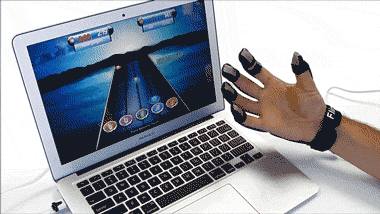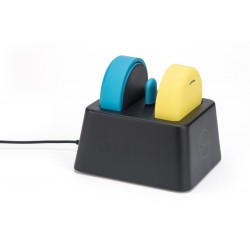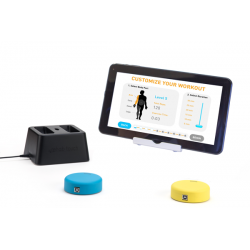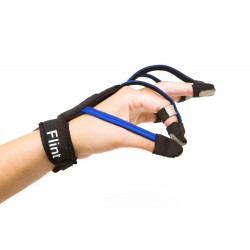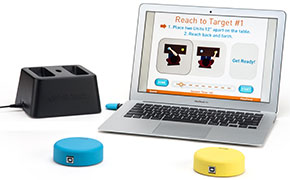Stroke Recovery:
7 Key Signs of Improvement Every Patient and Caregiver Should Know
A stroke is one of the most serious and sudden neurological threats. It can appear unexpectedly and completely change the lives of both patients and their loved ones. Although the consequences of a stroke can be dramatic—from paralysis and speech disorders to loss of independence—there is a realistic path to recovery. Rehabilitation can be long and complex, but there are specific signs indicating that the patient is on the right path.
In this article, we will examine seven of the most common and significant signs of improvement after a stroke. Understanding these will help patients and their caregivers not only track progress but also regain hope and motivation to continue working on restoring lost functions.
- Why is the pace of rehabilitation fastest in the initial months after a stroke?
- Is increased independence in daily activities a good sign?
- Can excessive sleepiness after a stroke indicate brain regeneration?
- How to recognize when it's possible to stop using compensatory techniques?
- Are muscle tremors a sign of neurological improvement?
- Can difficult emotions indicate progress in stroke recovery?
- Why can crossing legs be significant?
- How to accelerate rehabilitation after a stroke: Practical tips
- Most important things to remember
1. Why is rehabilitation fastest in the initial months after a stroke?
The neurological window—what is it, and why is it important?
The first weeks and months after a stroke constitute the so-called "golden period" of rehabilitation, during which the patient makes the most significant progress. This period sees the brain demonstrating heightened reparative activity and a readiness to reorganize functions impaired by the stroke. Thanks to neuroplasticity, other parts of the brain can assume tasks previously managed by damaged areas.
Rehabilitation and brain plasticity
Neurological rehabilitation, initiated early enough, maximizes the adaptive capabilities of the brain. Physical exercises, occupational therapy, speech therapy, and psychological support—all stimulate the brain to form new neural connections. Consequently, partial or complete recovery of lost functions becomes possible. During the initial three months after a stroke, the intensity of therapy plays a crucial role. This period necessitates the most engaged rehabilitation program—both in rehabilitation centers and at home. Each day of physical and cognitive activity contributes significantly to patient improvement.
The plateau phenomenon—should it cause concern?
Following rapid initial progress, many patients notice a slowdown in their improvement rate, known as the "plateau". Although this may cause concern, it is actually a natural stage in recovery that can be overcome through patience and continued, systematic effort.
The role of the therapeutic team
During the first months after a stroke, the patient should remain under the care of an interdisciplinary team: neurologists, physiotherapists, occupational therapists, speech therapists, and psychologists. Their collaboration allows for the creation of an individualized therapy program tailored to the type of stroke (ischemic or hemorrhagic), the extent of brain damage, and the patient’s capabilities.
Regardless of the degree of disability after a stroke, active patient participation in rehabilitation is essential for therapeutic effectiveness. Even minor daily activities—such as attempting to get out of bed independently or moving fingers—hold great importance in the process of restoring function.
What to do after the initial months?
Although the initial rate of improvement can be impressive, further rehabilitation in subsequent months and years also yields positive results. It is beneficial to continue therapy at home, participate in specialist consultations, and—where possible—use new technologies supporting neurological rehabilitation.
2. Is increased independence in daily activities a good sign?
Independence as one of the primary goals of therapy
For many stroke patients, regaining independence is their greatest aspiration. The ability to dress oneself, prepare meals, or use the bathroom independently is not only about comfort but also about dignity and control over one's life. Increased independence is often the first noticeable sign that rehabilitation is effective.
The role of occupational therapy
Occupational therapy plays a key role. Its task is to help patients return to daily activities by practicing practical skills. The occupational therapist teaches patients how to adapt their activities to their current abilities and how to use assistive devices if necessary.
Regular rehabilitation after a stroke—both physical and occupational—brings visible improvements in daily life. A patient who initially needed help with every activity may gradually regain independence. Activities like self-care, eating, and dressing are significant steps in the recovery process.
Each step toward independence boosts the patient’s motivation to continue working. Regaining control over everyday tasks reduces frustration, improves mood, and positively influences cognitive functions, leading to faster recovery.
The importance of the home environment
The home environment is critically important. Adjustments, such as installing bathroom grab bars, having rehabilitation equipment accessible, or caregiver support, can significantly facilitate the process of regaining independence. Emotional support and patience from family members are invaluable.
When independence requires support
Not all patients fully regain independence. In such cases, therapists teach compensatory strategies, enabling patients to perform activities differently. It is crucial for patients to feel secure, even if they require assistance or use assistive technology.
Independence as a measure of rehabilitation success
Rehabilitation specialists often evaluate progress based on patient independence. Functional scales, such as the Barthel Index or Rankin Scale, help measure how well patients manage basic daily tasks. The higher the level of independence, the better the prognosis.
Complete functionality need not be restored immediately. Each small success, like independently drinking tea, moving around the room, or showering, serves as proof that stroke recovery is progressing effectively.
3. Can Excessive Sleepiness After a Stroke Indicate Brain Regeneration?
Fatigue as Part of the Recovery Process
Excessive sleepiness after a stroke may surprise both the patient and their loved ones. Although it might seem like a sign of deterioration, it is often a symptom of the brain’s natural regeneration process. A stroke is a huge shock to the brain—both physically and metabolically—and sleep is one of the primary mechanisms aiding its return to equilibrium.
Neuroplasticity and the Need for Rest
After a stroke, the brain activates neuroplasticity—the ability to reorganize and form new neural connections. This process is intense and energy-consuming, hence the body's increased need for sleep. Sleep facilitates the consolidation of new skills acquired during therapy and accelerates recovery.
Neurological rehabilitation specialists emphasize that adequate sleep is fundamental for effective treatment. Stroke patients who allow themselves daytime naps and maintain good sleep hygiene at night often make faster therapeutic progress. Sleep supports rebuilding neural connections, reduces stress, and improves mood.
When Sleepiness Could Be a Warning Sign
Not all sleepiness after a stroke signifies improvement. If it is accompanied by apathy, lack of concentration, and a halt in rehabilitation progress, medical consultation is advised. Excessive sleepiness can sometimes indicate depression, sleep disorders, infections, or other health problems requiring intervention.
Keeping a fatigue diary—recording moments of greatest energy decline, frequency of naps, and sleep quality—can provide valuable insights for the therapeutic team, helping to adjust rehabilitation intensity to patient capabilities and prevent overexertion or insufficient activity.
Caregiver Support and Daily Routine
Caregivers should support patients in balancing activity and rest. Establishing a daily rhythm that allocates time for therapy, relaxation, and sleep is beneficial. A consistent schedule stabilizes nervous system function and improves the patient's overall well-being.
Sleepiness doesn't have to be an obstacle—it can indicate intensive bodily regeneration. In the long run, adequate rest is just as important as active rehabilitation. Patience and listening to bodily signals are key to achieving lasting improvement.
4. How to Recognize the Right Moment to Stop Using Compensatory Techniques?
What Are Compensatory Techniques and Their Role?
After a stroke, many patients use compensatory techniques—alternative ways to perform daily tasks that are difficult or impossible traditionally. Examples include using a cane, walker, preparing meals with one hand, or using grab bars during bathing. These techniques increase patient independence but do not always support the recovery of lost functions.
In the initial rehabilitation phase, compensatory techniques play an important role in maintaining safety, independence, and dignity. They allow patients to perform tasks without constant caregiver assistance. However, as neurological and motor conditions improve, it’s beneficial to gradually return to more natural forms of functioning.
Recognizing Readiness for Change
The decision to discontinue compensatory techniques should be individual and collaborative with the therapeutic team. Indicators of readiness include:
- greater control over movements,
- improved strength and coordination,
- lack of need for support in daily situations,
- improved sensation in the affected side of the body.
Practicing Return to Natural Movements
Physical and occupational therapists can assist patients in "unlearning" compensations. For instance, someone who previously dressed using only one hand might start performing simple bilateral exercises until they can complete the activity independently. Ensuring the process is safe and stress-free is vital.
When Compensation Hinders Rehabilitation
Although helpful initially, excessive reliance on compensatory techniques can impede recovery. For example, prolonged use of a cane might prevent proper muscle engagement in the stroke-affected side, hindering balance and muscle strength recovery.
Balancing Safety and Progress
The goal isn't to entirely eliminate compensatory techniques but to gradually reduce them according to patient capabilities. Always balance the desire for progress with ensuring safety. For example, patients might start walking without a cane at home but continue using it outdoors.
Each return to a "normal" way of performing tasks represents significant success—not just physically, but also psychologically. It boosts self-confidence and faith in one’s abilities, positively influencing overall recovery.
5. Are Muscle Tremors a Sign of Neurological Improvement?
What Are Muscle Tremors and When Do They Occur?
After a stroke, patients often experience various muscle tone issues—from flaccidity and paralysis to increased tension and involuntary movements. One such symptom, muscle tremors (fasciculations), might be unexpected. Sometimes these indicate neurological improvement, though in other instances, caution is required.
Following a stroke, damaged neural pathways may prevent muscles from responding properly. Rehabilitation and brain neuroplasticity help rebuild these connections. Tremors can indicate that neuromuscular communication is being re-established—particularly in areas previously paralyzed.
Recovery Stages According to Brunnstrom
The Brunnstrom stages describe the recovery of motor function after a stroke, including the onset of spasticity and its eventual overcoming. Muscle tremors might occur during the transition from paralysis to active movements, reflecting nervous system activity.
However, tremors are not always positive. Sometimes, they signal post-stroke complications, such as essential tremors, dystonia, or other movement disorders. Persistent, intensifying tremors accompanied by additional symptoms (e.g., pain, loss of motor control) warrant neurological evaluation.
Collaboration with the Rehabilitation Team
Patients experiencing tremors should inform their physiotherapist and physician. Their evaluation can distinguish between beneficial neuroregeneration and symptoms needing further investigation. Keeping a symptom diary noting occurrences and frequency can also help.
Properly planned rehabilitation—proprioceptive exercises, electrostimulation, or balance training—can support positive muscle activity. Increased muscle tension and tremors might be transitional stages, eventually leading to smooth, purposeful movements.
For many patients, initial signs of movement—even minor tremors—bring tremendous hope, indicating active neurological recovery. Although initially uncoordinated, these early movements represent critical first steps towards improved functionality.
6. Can Difficult Emotions Indicate Progress in Stroke Recovery?
Emotions After Stroke—A Natural Reaction
A stroke is not only a physical injury but also an emotional and psychological experience. Many stroke survivors feel frustration, sadness, anger, or even a sense of loss. Although these emotions might seem like obstacles to recovery, specialists increasingly acknowledge them as inevitable stages in the healing process.
Stages of Grieving Lost Abilities
Psychologists liken emotional reactions after a stroke to classic grief stages: denial, anger, bargaining, depression, and acceptance. These emotions surface when patients realize the magnitude of life changes—from loss of independence to reliance on others. Navigating these stages can be challenging but is essential for achieving emotional equilibrium.
Anger towards circumstances, one's own body, or healthcare systems is common among stroke patients. Similarly, sadness and lowered mood are frequent. Experiencing these emotions might indicate deeper engagement with reality and the beginning of adaptation. Conversely, the absence of emotional responses may signal emotional suppression, potentially hindering recovery.
Role of Family and Social Environment
Psychotherapy, participation in support groups, and consultations with psychologists can help patients manage emotional turmoil. Sorting out internal chaos enhances participation in rehabilitation and improves quality of life. Many rehabilitation centers now include psychologists or mental health therapists as integral team members.
Family support is crucial. Families that understand mood fluctuations and do not judge patient reactions create a safe environment for recovery. Empathy, patience, and acceptance are more effective than mere encouragement.
When to Seek Professional Help
If sadness escalates to depression or anger leads to aggression or withdrawal, immediate consultation with a doctor or psychotherapist is necessary. Post-stroke depression is common but treatable—either pharmacologically or therapeutically. Left untreated, depression can severely impede recovery.
From Emotions to Acceptance
Although difficult emotions are painful, they indicate patient engagement and commitment to recovery. Patients who navigate intense emotional periods often demonstrate increased motivation and determination in subsequent rehabilitation phases.
The acceptance stage—though often the hardest—allows patients to reconcile with their new reality. It does not mean abandoning the fight for improvement but acknowledging that recovery takes time, patience, and support. For many, acceptance marks the real beginning of healing.
7. Why Can Crossing Legs Be Significant?
Meaning of Leg Crossing After Stroke
The ability to cross legs—simple and automatic for healthy individuals—can be a meaningful sign for stroke survivors. It indicates regained control over trunk muscles, balance, and motor coordination, reflecting recovery of essential neurological functions required for daily life.
Clinical studies suggest patients able to cross their legs within the first 15 days post-stroke have a higher likelihood of regaining motor function. This action requires good posture control, lower body strength, and integration of various neural centers. However, inability to cross legs doesn't eliminate chances for recovery but serves as a useful prognostic marker.
Balance and Stability—Rehabilitation Foundations
Leg crossing demands active engagement of abdominal, back, and lower limb muscles, indicating strong trunk balance. Good trunk stability is foundational for rehabilitation milestones such as walking, rising from bed, dressing independently, or using the restroom.
Impact on Patient Self-Esteem
Small improvements, like crossing legs, significantly impact patient psychology. Visible physical achievements boost motivation and instill confidence in recovery potential. However, leg crossing should not serve as a universal progress measure. Stroke recovery varies considerably; not every patient regains this ability, yet their recovery process may still be successful overall.
Exercises to Enhance Coordination and Control
Neurological rehabilitation includes exercises improving trunk control, muscle strength, and stability. Collaborative work with physiotherapists focusing on balance, muscle tone, and proprioception can facilitate regaining this and other functional abilities.
Observing small successes, regardless of specific achievements, is vital. Every regained function represents meaningful progress, deserving recognition and celebration as a step toward recovery.
8. How to Accelerate Stroke Rehabilitation: Practical Tips
Consistency Is Key
Consistency significantly enhances stroke rehabilitation effectiveness. Daily exercises—even brief and simple—support neuroplasticity and consolidate learned skills. Home-based rehabilitation continues hospital therapy and remains effective if conducted systematically.
Collaboration with a specialist team (neurologist, physiotherapist, occupational therapist, speech therapist, psychologist) optimizes rehabilitation. Regular consultations and therapy plan updates maximize effectiveness.
Planning Home Exercises
Creating a daily activity plan incorporating physical exercises (for limbs and trunk), breathing and relaxation techniques, and daily tasks (dressing, meal preparation) constitutes active rehabilitation. Maintaining an exercise journal benefits motivation and therapist feedback.
Motivation and Positive Attitude
Maintaining motivation is challenging. Visualizing goals, tracking progress, engaging with peers, and receiving emotional support help sustain momentum. Celebrating minor achievements reinforces progress.
Technological Support in Rehabilitation
Modern technology—including mobile apps, robotic rehabilitation devices, hand therapy platforms, and virtual reality—enriches rehabilitation, enhances engagement, and provides immediate feedback.
Nutrition and Lifestyle
A balanced diet, proper hydration, sufficient sleep, and avoiding substances boost neurological rehabilitation effectiveness. Nutritional strategies also mitigate recurrent stroke risks through controlling blood pressure, blood sugar, and cholesterol.
Caregiver Role
Caregiver and family involvement significantly accelerates recovery through emotional support and motivation. Education on stroke and recovery processes fosters realistic expectations and reduces frustration.
9. Key Points to Remember
- Initial months post-stroke are crucial for neuroplasticity.
- Independence indicates progress in daily tasks.
- Sleepiness may signal regeneration rather than deterioration.
- Reducing compensatory techniques is a positive indicator.
- Muscle tremors can signal neurological improvement.
- Emotional responses are integral to healing.
- Leg crossing demonstrates regained balance.
- Consistency, motivation, and support underpin successful recovery.
Bibliography and Sources
- Brunnstrom S. Movement Therapy in Hemiplegia: A Neurophysiological Approach. Harper & Row, 1970.
- Teasell R, Hussein N, Foley N, et al. Evidence-Based Review of Stroke Rehabilitation. Heart and Stroke Foundation Canada, 2021.
- Taylor JB. My Stroke of Insight. Viking Penguin, 2008.
- Cramer SC, Sur M, Dobkin BH, et al. Harnessing neuroplasticity for clinical applications. Brain, 2011;134(6):1591–1609.
- American Stroke Association. Stroke Recovery and Rehabilitation. https://www.stroke.org
- Winstein CJ, Stein J, Arena R, et al. Guidelines for Adult Stroke Rehabilitation and Recovery. Stroke. 2016;47(6):e98–e169.
- National Institute of Neurological Disorders and Stroke (NINDS). Stroke Rehabilitation Information Page. https://www.ninds.nih.gov
Be inspired by a story of survival after a stroke
The FitMi kit is perfect for rehabilitation.
Like many other customers, I was skeptical about buying this device because of the price. I bought FitMi for my 21-year-old daughter who suffered a severe brain injury almost two years ago. Movement in her left arm and leg was nearly impossible — until I discovered this kit.
So far, we haven't yet done exercises for the leg, mainly focusing on the arm to restore initial movement in her hand. I also think the disks are a bit too large for her, but with the silicone covers, we manage. From what we can see, exercising with FitMi is something truly extraordinary.
Thank you so much for helping my daughter regain some mobility!
Renata and Mariola (12.04.2020)


